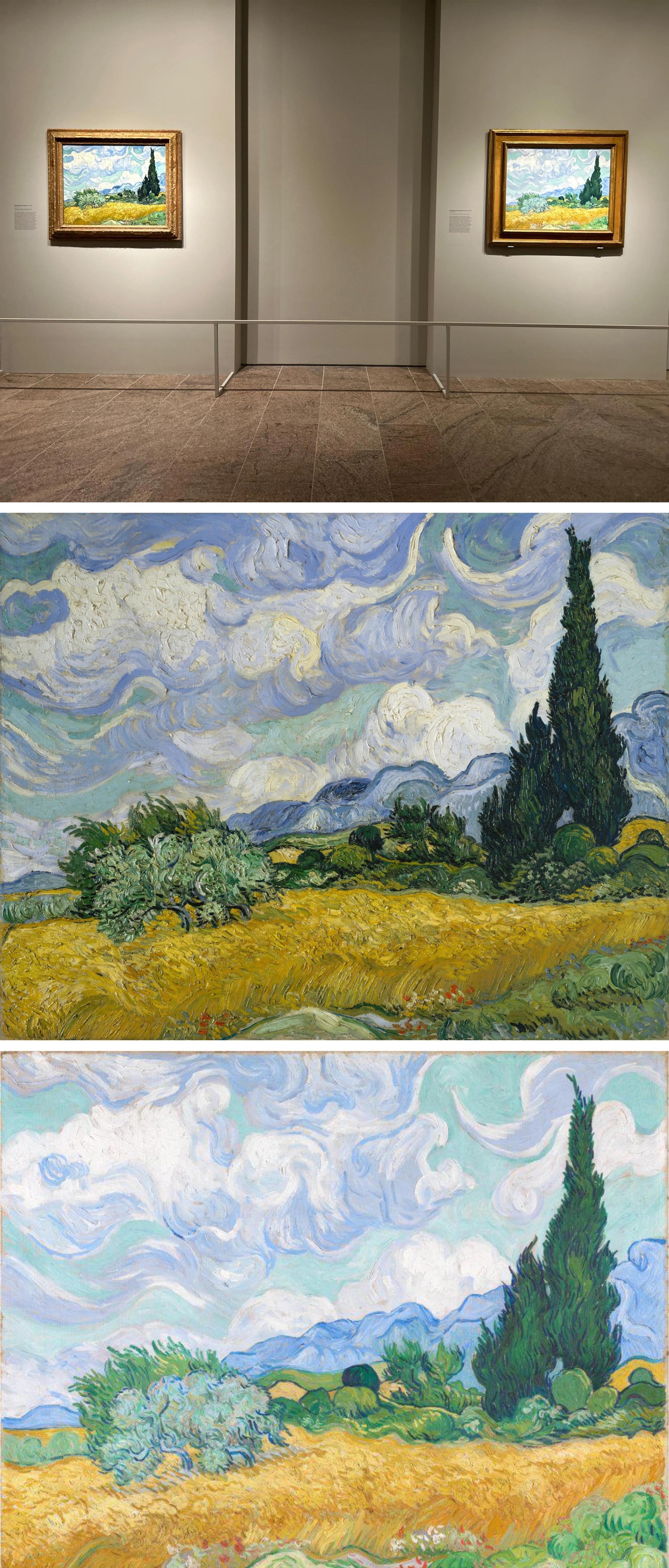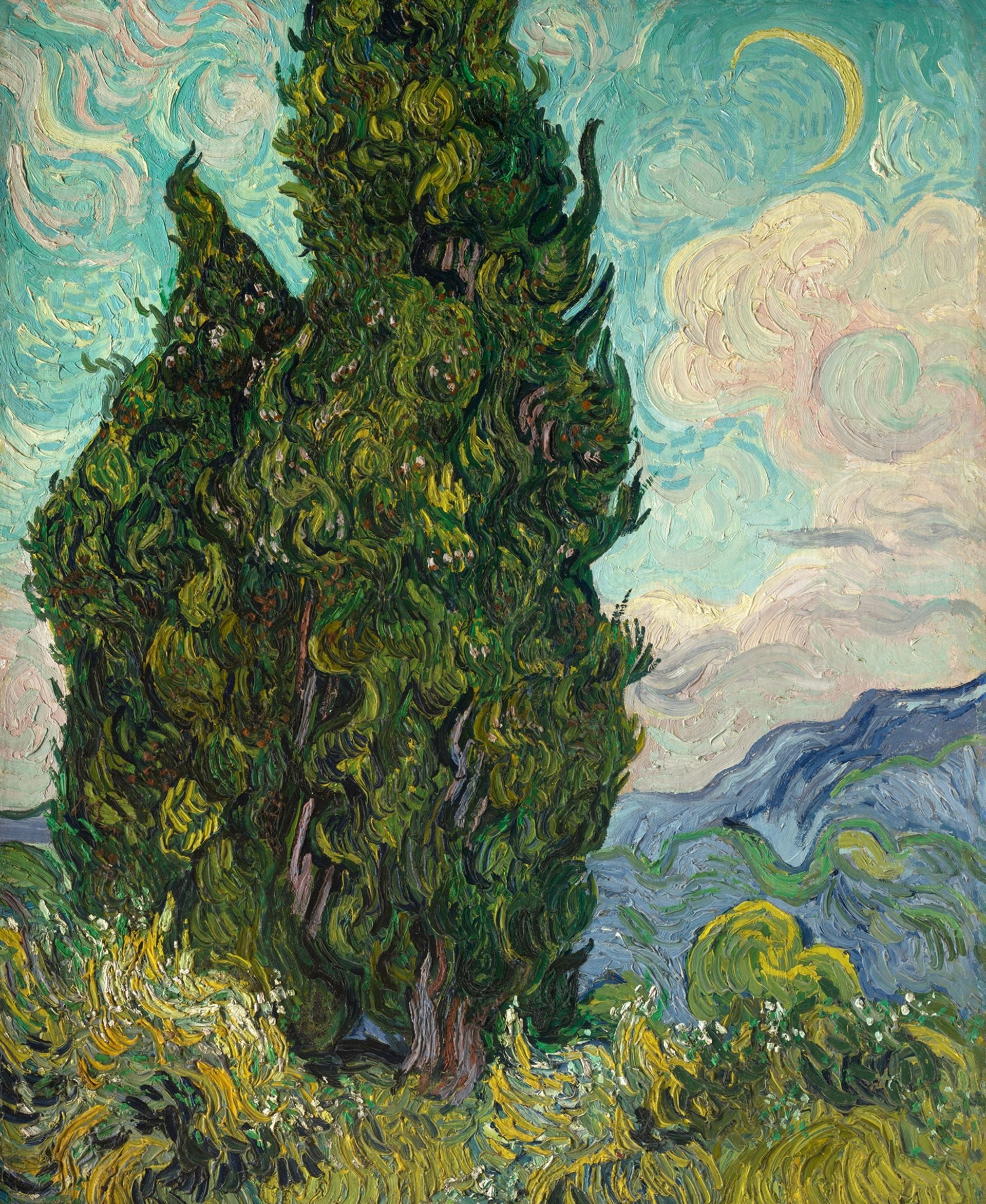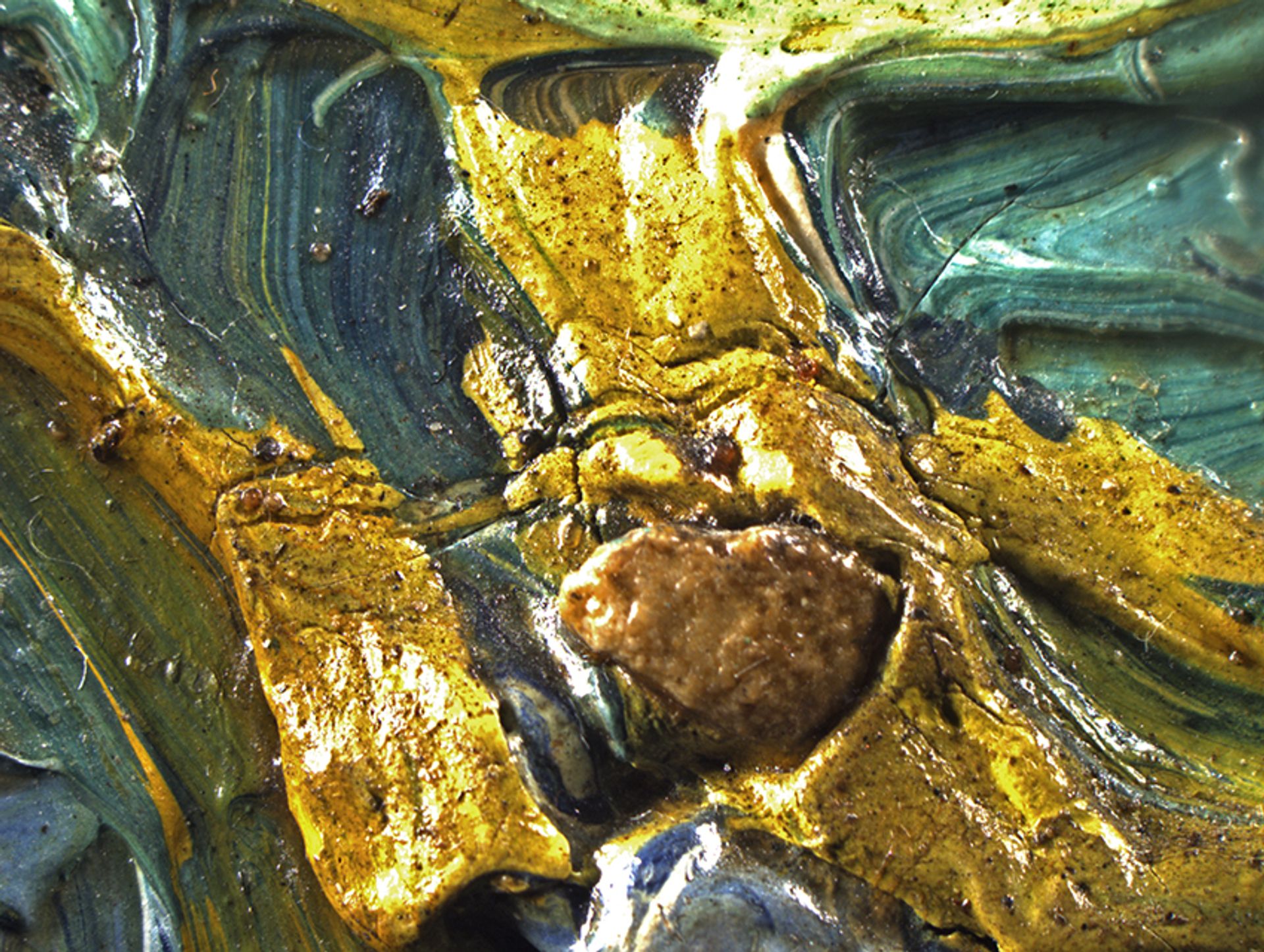Van Gogh’s cypresses are the focus of an exhibition opening at the Met in New York

Van Gogh’s Cypresses (22 May-27 August) at New York’s Metropolitan Museum of Art will examine how the artist enlivened his landscapes with these Provençal trees. The show features Starry Night (June 1889), in which the artist captured their dynamic, twisted forms in a majestic composition.
In Starry Night the cypresses surge up into the firmament, creating a powerful visual link between earth and the heavens. The picture, arguably the greatest attraction at the Museum of Modern Art, was painted in the asylum where Van Gogh lived from May 1889 to May 1890. It was last lent to an exhibition in 2007.
The Met show also includes the most expensive Van Gogh ever auctioned, Orchard with Peach Trees and Cypresses (April 1888). It sold for $117m at Christie’s, New York last November.

Van Gogh’s Orchard with Peach Trees and Cypresses (April 1888), which went for $117m © Christie’s Images Limited 2022
In New York, the only venue for the cypresses exhibition, there are 40 Van Goghs (26 paintings and 14 drawings), plus four letters with little sketches, which are rarely shown for conservation reasons. These are nearly all the artist’s compositions featuring these trees. Van Gogh began including cypresses in his landscapes painted on the outskirts of Arles in 1888 and they became much more prominent after he moved to the asylum outside Saint-Rémy-de-Provence the following year.
Susan Stein, the Met’s curator, concludes that as Van Gogh had hoped, “the Cypresses were destined to become a signature motif on a par with the Sunflowers”.

Installation shot at Van Gogh’s Cypress exhibition, Met on left, National Gallery on right; Van Gogh’s Wheatfield with Cypresses (June 1889) from Met; Wheatfield with Cypresses (September 1889) from National Gallery
Credit (Top to bottom): Martin Bailey; Metropolitan Museum of Art, New York (purchase, Annenberg Foundation Gift, 1993); National Gallery, London
One of the treats is to see two versions of Wheatfield with Cypresses, both the same size. This will be the first time that they have been brought together since 1901, when they were on sale at the Paris dealer Bernheim-Jeune. Stein regards this composition as the “daytime counterpart” of Starry Night.
The first version, dating from June 1889, is in the Met’s own collection. It was painted outside in the countryside just beyond the asylum’s walls, which is confirmed by the discovery of a wheat husk and tiny pieces of gravel in the paint. Van Gogh regarded the picture as a study, to capture the motif. It has an immediacy. In 1951 the picture was bought by the Swiss arms dealer Emil Bührle, whose son sold it to the Met in 1993.
The second version, coming on loan from London’s National Gallery, was done back in his asylum studio in September 1889. This work is more stylised and decorative. In 1923 the painting was bought for the Tate Gallery for £3,300, representing the first Van Gogh in a UK public collection, and in 1961 it was transferred to the National Gallery.

Van Gogh’s Cypresses (June 1889)
Credit: Metropolitan Museum of Art, New York (Rogers Fund, 1949, 49.30)
One of the most interesting discoveries is that another of the Met’s Van Goghs, Cypresses, a composition centred around a pair of trees, seems to have toppled over on Van Gogh’s easel. Conservator Charlotte Hale and scientist Silvia Centeno found scores of sand particles and small limestone pebbles, the largest 6mm in diameter, embedded in the paint, along with vegetal matter. This confirms that the picture was painted outside.
Some of the thick impasto paint has been indented, suggesting that the sand and pebbles were imbedded when the picture fell to the ground. This could well have happened when a powerful mistral wind was blowing. Van Gogh later painted over some of the debris, presumably back in his studio.

Pebble found embedded in the paint surface of Cypresses (highly enlarged photomicrograph image)
Credit: Department of Paintings Conservation, Metropolitan Museum of Art, New York
The Met exhibition is notable for some important privately owned loans. These include Trees in the Garden of the Asylum (October 1889), which was auctioned for £9m in 2010, and Landscape under turbulent Skies (April 1889), which sold for $54m in 2015. Larry Ellison, the co-founder of Oracle Corporation, is lending Farmhouse among Olive Trees (December 1889).
One work which will certainly not be coming to the New York show is Van Gogh’s drawing (June 1889) of his painting of Starry Night. This drawing is now in Russia.
Loans from Russia were never on the cards, but there is an additional problem with this key work. It was looted by the Red Army in Germany at the end of the Second World War and never returned to its rightful owner, the Bremen Kunsthalle. This drawing remains locked away by Russia’s ministry of culture.

Van Gogh’s drawing of Starry Night (June 1889)
Credit: Bremen Kunsthalle, looted and now in Moscow
Seeing all the cypress works assembled together in the Met exhibition makes one wonder to what extent Van Gogh inserted the trees in his landscape paintings when they were not always actually there on that exact spot. There were certainly numerous cypresses in Provence, but not necessarily in the spots where they appear in the landscape paintings. Van Gogh also liked to exaggerate the heights of his trees. I suspect that he used considerable artistic licence, but this merely helps to confirm the importance of the motif in his work.
Writing to his brother Theo in June 1889, Vincent expressed his determination to capture the essence of these striking trees: “The cypresses still preoccupy me, I’d like to do something with them like the canvases of the sunflowers because it astonishes me that no one has yet done them as I see them”.
When Van Gogh was buried in July 1890, after his suicide, his grave was covered with branches of cypress trees and bouquets of large sunflowers, according to an obituary in Moniteur des Arts (22 August 1890). Seeing the powerful range of works in the Met’s exhibition, he certainly succeeded in his ambition.
Source link





